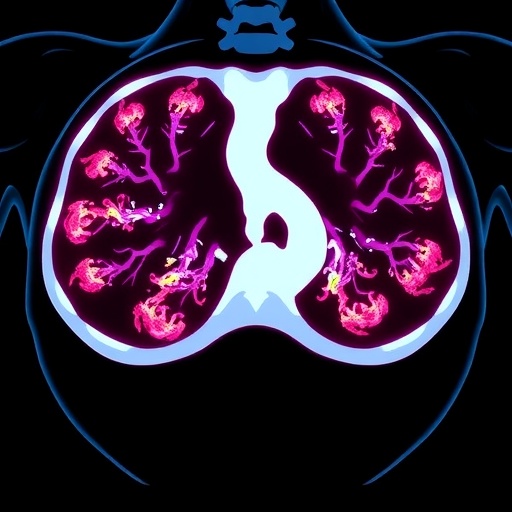A new groundbreaking study from Japan sheds critical light on the complex dynamics of suicide risk among cancer patients, revealing nuanced transitions in vulnerability following diagnosis. This comprehensive research, based on data drawn from a robust population-based cancer registry, provides an unprecedented examination of suicide incidence and risk fluctuations over time post-cancer diagnosis. By harnessing the power of longitudinal data from the Kanagawa Cancer Registry, investigators have mapped suicide risk transitions with temporal precision, spotlighting critical windows for intervention which could alter patient outcomes dramatically.
Cancer diagnosis is widely recognized as a profoundly distressing event, imposing not only physical but also significant psychological burdens on patients. What remains less understood, however, is how suicide risk evolves in the period following diagnosis—a time fraught with uncertainty, treatment challenges, and emotional turbulence. This study specifically targeted this gap in understanding by analyzing suicide rates in cancer patients over distinct intervals extending up to four years post-diagnosis, a timespan rarely explored with such granularity.
Employing standardized mortality ratios (SMRs), the researchers quantified suicide risk relative to that of the general population, evaluated at rigorous 3-month intervals up to 48 months after cancer diagnosis. Such a method allows for tracking shifts in risk with exceptional temporal resolution. Notably, the analysis uncovered a conspicuous early peak: within just the first three months following diagnosis, suicide risk surged to an SMR of 3.45, meaning that cancer patients were over three times more likely to die by suicide than matched controls without cancer. This peak underscores the acute psychological crisis often triggered by the initial shock and disruption posed by a cancer diagnosis.
.adsslot_e6wTcvmdgp{ width:728px !important; height:90px !important; }
@media (max-width:1199px) { .adsslot_e6wTcvmdgp{ width:468px !important; height:60px !important; } }
@media (max-width:767px) { .adsslot_e6wTcvmdgp{ width:320px !important; height:50px !important; } }
ADVERTISEMENT
Following this early spike, suicide risk displayed a complex pattern, gradually receding but showing a secondary, smaller uptick between 13 and 15 months. This bimodal distribution hints at multiple phases during illness progression when patients might encounter severe distress – not only at diagnosis but potentially upon facing treatment failure, cancer recurrence, or metastasis. The intricate nature of this temporal pattern demands that mental health support systems be adaptive and sustained through various critical stages of patient care.
Further survival analysis added depth to these findings by calculating cumulative suicide incidences over time. The data demonstrated that 0.23% of cancer patients ended their lives within six months, with this figure rising modestly to 0.33% at one year post-diagnosis. Although these percentages may seem low in absolute terms, they represent significant human tragedies in a population scale and flag the urgent need for oncologists and mental health professionals to proactively address suicide risk continuously across the cancer trajectory.
Multivariable modeling elucidated key patient characteristics influencing suicide risk. A striking discovery was that patients diagnosed with cancers associated with intermediate or poor prognoses exhibited substantially higher suicide hazards. This finding offers insight into how perceived severity and anticipated clinical outcomes may interact with psychological states, intensifying feelings of hopelessness or despair. Gender differences were also apparent, with female patients demonstrating a notably lower suicide risk compared to their male counterparts, mirroring broader epidemiological trends in suicide behavior but emphasizing the need for tailored risk assessment.
The study’s methodology merits attention for its integration of nationwide, population-level registry data—a resource that provides comprehensive, longitudinal follow-up while avoiding biases common in smaller clinical cohorts. Such registry-based studies enable epidemiologists to detect rare but impactful events like suicide with greater statistical robustness. The use of the Fine and Gray competing risks model further refined risk estimations by accounting for death from other causes, an essential consideration in populations facing life-threatening illnesses.
From a clinical perspective, these findings highlight a critical window in the immediate post-diagnosis period when suicide prevention efforts may be most needed. Early psychological screening, enhanced counseling services, and coordinated multidisciplinary approaches could be prioritized during this time. Moreover, the secondary risk peak identified at around one year suggests that ongoing mental health monitoring should be maintained rather than tapered off prematurely.
The implications extend beyond clinical practice to healthcare policy and cancer care frameworks. Incorporating suicide risk assessments into standard oncological protocols and survivorship care plans could save lives. The data also point to potential benefits of targeted support for high-risk groups, including patients with aggressive cancer types or limited prognoses. Tailored interventions could range from psycho-oncology consultations to community support programs and enhanced family counseling.
Importantly, the rarity of suicide in the study—accounting for only about 0.27% of deaths among cancer patients—should not diminish the urgency of addressing this public health issue. Even infrequent, suicide in this vulnerable population signals profound distress and unmet needs. Its preventability, combined with the severe personal and societal consequences, elevates suicide prevention to a critical component of holistic cancer care.
The study’s context within a Japanese population also adds valuable cultural and epidemiological insight. Cultural perceptions of cancer, mental health stigma, and social support systems differ globally, yet the fundamental revelation of time-varying suicide risk likely has universal relevance. Cross-national comparisons and replication studies could further contextualize these findings and guide internationally applicable strategies.
With Japan facing an aging population and rising cancer incidence, the study’s revelations carry significant weight for national healthcare planning. The integration of mental health services within cancer registries and treatment pathways may become an essential frontier. This research thus lays an empirical foundation for such systemic innovations.
Future work building on these results could explore the biological and psychosocial mechanisms driving the observed bimodal suicide risk pattern. For instance, investigating inflammatory markers, neuropsychiatric symptom trajectories, or social support fluctuations might elucidate causal pathways. Additionally, evaluating the effectiveness of specific interventions timed to risk peaks could translate epidemiological insights into practical benefits.
Overall, this landmark study ignites a crucial dialogue on the interplay between cancer progression and mental health crises, emphasizing that the battle against cancer must recognize the full spectrum of patient vulnerabilities. Suicide risk transition post-diagnosis is intricate and dynamic, demanding vigilance, empathy, and innovation from the entire oncology community.
Cancer care providers, mental health professionals, policymakers, and patient advocates must assimilate these findings into actionable strategies. The challenge lies in transforming data into compassionate care pathways that anticipate and mitigate the profound despair engendered by cancer diagnoses. Armed with these insights, the hope is to prevent future losses and improve quality of life for millions navigating the cancer journey worldwide.
Subject of Research: Suicide risk and incidence transition following cancer diagnosis, assessed through population-based registry data.
Article Title: Suicide risk transition and cumulative incidence post-cancer diagnosis: retrospective cohort study utilizing population-based cancer registry in Japan
Article References:
Watanabe, K., Nakamura, S., Chei, CL. et al. Suicide risk transition and cumulative incidence post-cancer diagnosis: retrospective cohort study utilizing population-based cancer registry in Japan. BMC Cancer 25, 1243 (2025). https://doi.org/10.1186/s12885-025-14635-6
Image Credits: Scienmag.com
DOI: https://doi.org/10.1186/s12885-025-14635-6
Tags: cancer patient outcomes and mental healthcancer registry researchemotional challenges after cancer diagnosisintervention strategies for cancer patientsJapan cancer studylongitudinal data on cancerpost-cancer suicide riskpsychological impact of cancer diagnosisstandardized mortality ratios in cancersuicide incidence in cancer patientstemporal analysis of suicide riskunderstanding suicide risk over time






